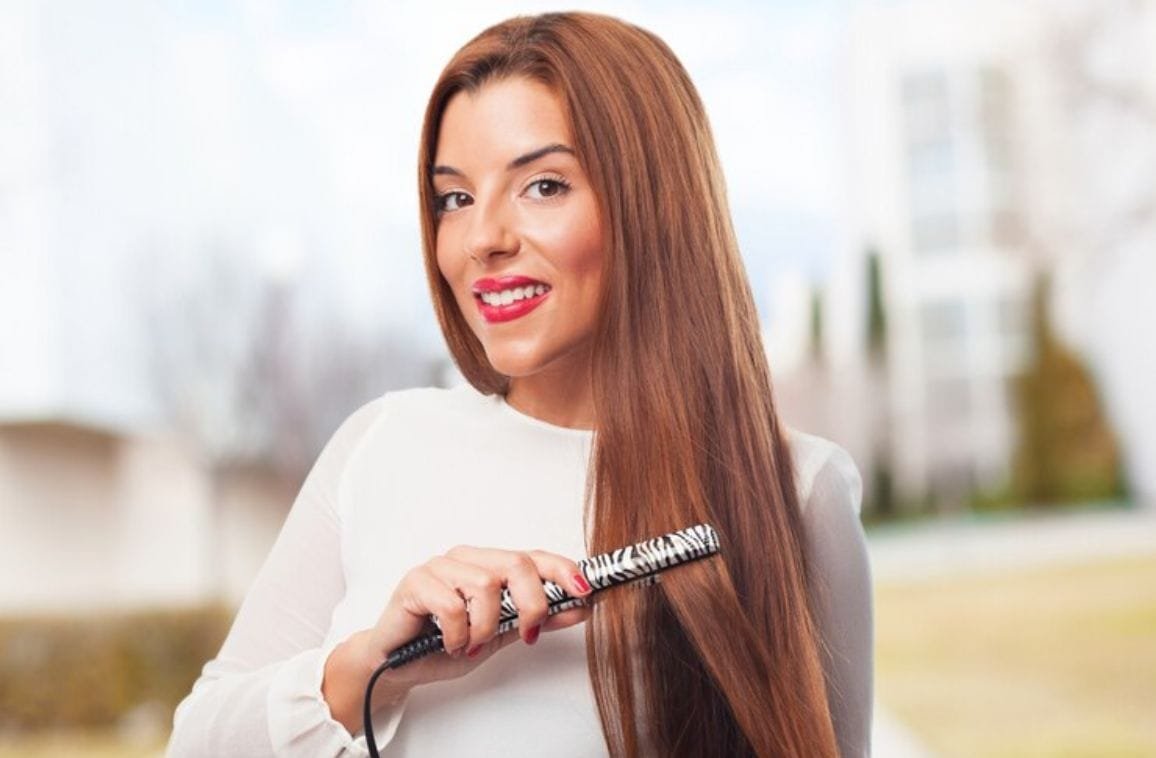When it comes to styling one’s hair, be it bouncy, voluminous locks or a smooth, sleek style, hair straightening tips help.
Straightening one’s hair should be done well. Hair straighteners come in a range of heat settings and plate sizes to straighten hair the best way possible.
It does help to prep one’s hair prior to heat styling in order to minimize damage and also create shine. Making use of a moisturizing shampoo and conditioner does help lock in moisture, and the person needs to avoid products that contain detergent. These strip the hair of its natural protective oils, leaving it exposed to heat damage.
After washing, towel dry the hair, gently squeeze it, and avoid rubbing it before applying a leave-in conditioner.
Why not try out these hair-straightening tips?
1. Dry your hair
Before you even think about switching your straighteners on, make sure your hair is dry. This is because straighteners and wet and damp hair do not mix.
Hair is indeed made up, largely, of proteins known as keratins. These proteins are contained within the cuticle. While wetting hair, the water gets absorbed via the outer layer of the cuticle into one’s cortex, and it swells up. This swelling tends to weaken the cuticle by forming gaps along it, whereby the water sits, and in turn, creates weaker bonds between the proteins inside. This leads to wet hair becoming more liable to damage.
2. Apply heat protection
Apply a heat protector. Heat protection products do form a coating on one’s hair fibers, which helps minimize the damage caused by extreme heat and styling.
These are available as creams, oils, and sprays and protect the hair from excess heat, which in turn minimizes the damage.
The majority are applied after blow-drying and before straightening, and Koniak advises that, while it is possible to cover the entirety of your hair with protection before you start styling, it’s best to apply it to each section individually as you go.
3. Choose a heat setting
Once the hair is dry and also protected, set the straighteners to the most appropriate hair setting for one’s hair type.
If using straighteners with a range of heat options, then it is necessary to make a choice. The thicker the hair, the stronger the hair and this kind of hair can be heat resistant.
If having fine hair, use a hair straightener on a lower heat setting.
Curly hair does tend to be dryer than straighter hair types, and this can make it rather more susceptible to damage. This means setting a lower heat setting. Of course, curly and natural hair can also be thicker.
4. Divide into sections and then straighten
Straightening hair means the goal is to smoothen the hair cuticle.
The focus needs to be on ensuring the hair straightener is gently used and slowly from the root to the tips of one’s hair. Dividing the hair into smaller, more manageable strips via the use of sectioning clips takes a little longer, but the finish will turn out to be smooth.

5. Brush and finish
Brushing the hair does not simply remove knots; it can indeed help further smoothen the cuticle, thus adding to a sleek finish.
If after brushing and having flyaway hair, or ends look a little dry, apply a pea-sized amount of serum or perhaps a lightweight oil to the mid-lengths and also ends.
Conclusion
Why plan to visit a salon when hair can be straightened at home itself? Hair can become straight without any hassles with the usage of the right products and ingredients. The above-mentioned hair straightening tips are useful.








